|
|
|
| Dec 31 - New Years Eve. We start early
since we are going forty miles northwest of the city to visit the town of Cu
Chi, made famous during the American War for its extensive network of
underground tunnels spanning ~150 miles. The tunnels, three levels deep,
were first used by the Viet Minh against the French in the 1940s, then they were
used as hideouts for the Viet Cong.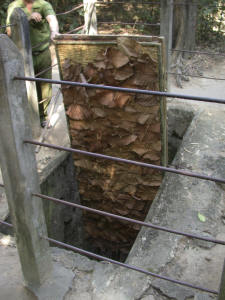
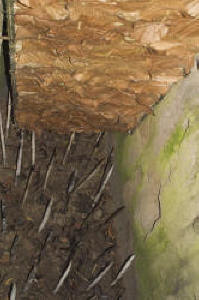
We visited the Ben Dinh site, the site of the
famous picture of the little girl amid the napalm bombing. Our tour at the
tunnel area started at a visitors' center in which we watched a film about the
area and its wartime use. Models and diagrams of the tunnels were
scattered throughout the building. When we moved outside, we were shown a
number of booby-traps built and used during the war.
Displays depicted life in the tunnels and the surrounding
areas including cooking, sewing, weapon creation, hospital care, etc. In
the background, a firing range for use by the tourists provided realistic sound
effects. We had the opportunity to experience the claustrophobic
experience of crawling in the tunnels. Fortunately, these tunnels had been
widened to accommodate the Westerns who are generally of a larger frame.
Nonetheless, it is difficult to comprehend that tens of thousands of people
lived for long periods of time underground with little air and mobility.
Across the plaza from our hotel is the Municipal Theater
and the Continental Hotel. Here the city prepared for the New Year's Eve
festivities where we would celebrate the beginning of 2004. The Continental
Hotel, built in the French colonial days, was once a common lunch spot with an
open terrace. It later became a popular meeting place during the American
War and later was filmed in Graham Greene's The Quiet American.
The Municipal Theater, built in 1899 by the French, was
originally an opera house. It became the home of the National Assembly of South
Vietnam until 1975 when South Vietnam ceased to exist and was turned into a
theater.
The Caravelle Hotel was made famous during the American
War as most foreign correspondents stayed here. During the 1968 Tet
Offensive, several US marines were killed here; journalists filmed the battle
from the rooftop. We celebrated New Years Eve in the Caravelle's Saigon Bar.
Our next stop was the Reunification Palace, symbol of the South Vietnamese regime since it was the former Presidential Palace of Ngo Dinh Diem. The site originally was the former French governor's residence but became occupied by Diem when he took over as the new president of South Vietnam. Rebuilt in 1966, it remained occupied until early 1975 when communist tanks crashed through the gates and the South Vietnamese government was overthrown. 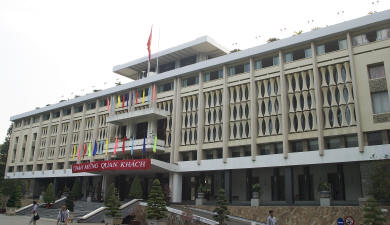
The interior furnishings are 1960s personified. The main floor is the president's reception and living area. The second floor is the president's wife's reception and living quarters. There is a theater and helipad on the third floor while three floors below the building are massive bunkers and communication centers in which the president would retreat when attacked as in 1962. 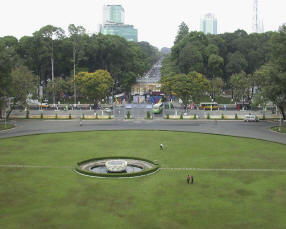
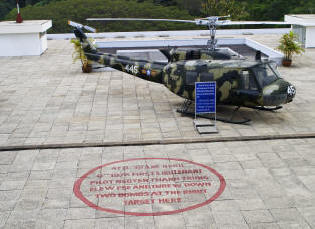
We returned to the Hotel and said good-bye to Truan and our driver. We returned to the area near the Reunification Palace for dinner at Ngong. There were many people in the street all evening awaiting the arrival of the New Year. The plaza in front of the Municipal Theater was packed with people watching ballet dancers and listening to singers and other entertainers throughout the evening. We stayed up to usher in 2004. Jan 1 - New Years Day . We spent a leisurely day walking around the city on our own. 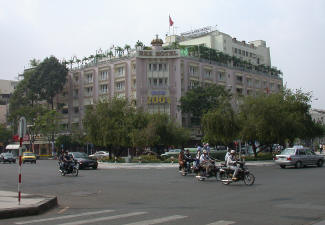
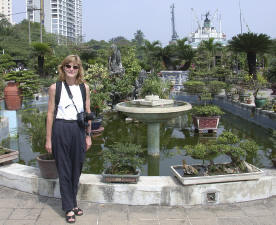
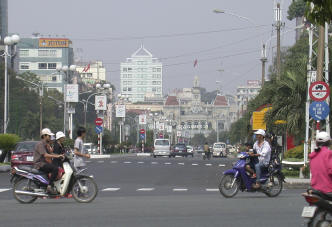
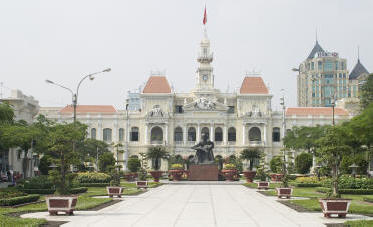
Along our way we passed the City Hall and the plaza with a statue of Ho Chi Minh in his role of uncle of all the children. We wandered down to the river area and then cruised over to the location of the former bar "Apocalypse Now." 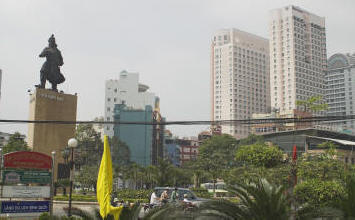
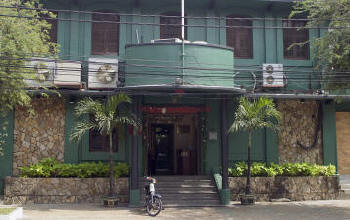
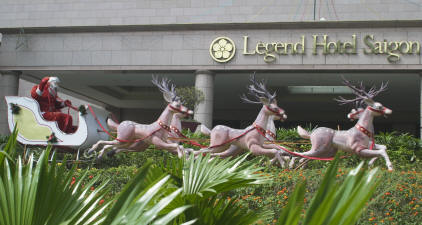
We lunched at Lemongrass, a well known tourist spot and spent a few hours reading and writing post cards in the Saigon Bar before departing to catch our night flight to Singapore and on to Perth. |
|
|